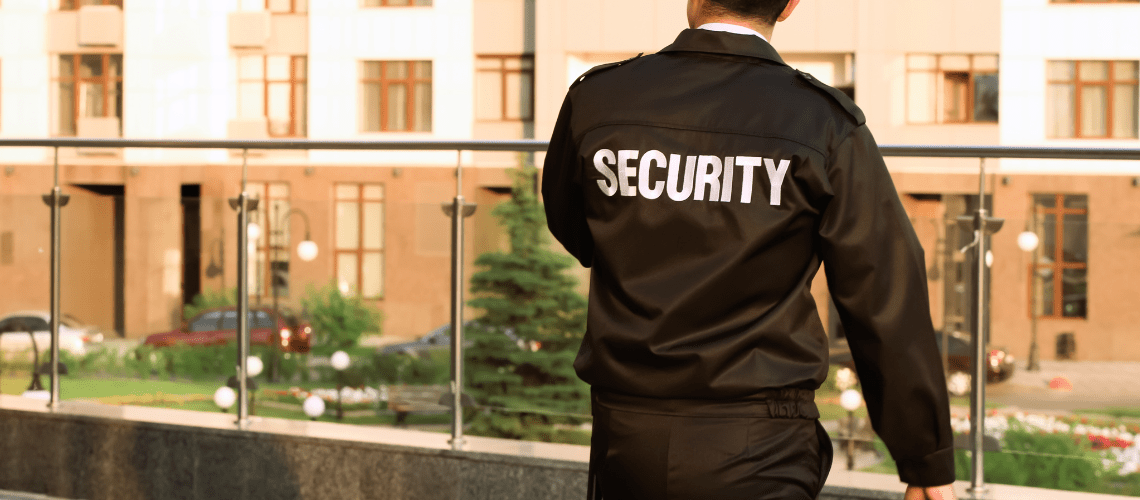Not Just for Schools: Evaluating Lockdown Systems for Places of Worship

While we focus much of our attention as a company on school lockdowns and securing our nation’s schools; places of worship, government buildings, office complexes, and residential facilities have also become threats of those wishing to do harm to others. Those in charge of these facilities need the ability to lock them down when necessary, and the understanding of how best to implement strategies to keep their occupants safe should a lock down occur. In this article we look at places of worship, and how lockdown systems like the LockOut SmartBoot System can be effective security measures for these facilities.
Background
According to the Associated Press, there have been at least sixteen shootings at places of worship in the US since 2012. While these numbers may certainly be incomplete, at a rate of nearly three per year, these incidents have taken a heavy toll on worshipers and reminded all of us that no place is exempt from a person wishing to do harm to others. The Tree of Life Synagogue, Emanuel African Methodist Episcopal Church, and Sikh Temple of Wisconsin shootings show us that the targets of threats are as diverse as we are, and while we celebrate our diversity, some would seek to use it as an excuse to harm those who worship in peace.
Open Doors
One of the hallmarks of most places of worship is open doors that welcome community members in for service each week. Unfortunately, it is exactly the belief that all should be welcome that has allowed shooters and other threats to enter places of worship in the past. Many churches have begun locking doors to deter potential threats from entering their facilities, but in some case, that may not be an effective strategy. While it is a strong, though unfortunate, start, simply locking doors does not always deter threats.
Are Door Barricades the Answer?
Door barricading devices have become a popular way over the past several years to lock down facilities in the event of a shooter or other armed threat, and for good reason. Keeping a dangerous person out of your building is one of the most effective ways to keep occupants safe, and having the ability to lockdown interior rooms becomes important in scenarios where a threat gains access to the building. If these devices are important, why haven’t more churches deployed them? Leaders at places of worship have been struggling with the idea of locking doors during services, and the message that may send to the community, as the idea of welcoming all attendees is so important to most places of worship. This belief, along with the idea that simply locking doors is an effective strategy to keep out threats, has kept many of these facilities from taking further steps to secure doors. While door barricades may not be the only answer, they certainly are an effective way to reinforce entry points and deter threats who wish to gain access.
Glass Entry Points
While many places of worship have heavy wooden or steel doors, many also have entry doors made of ornate glass, which is especially true of accompanying schools. These doors become easily accessible should a threat have means to break through the glass. Using a shield over entry points such as these has become an effective strategy for schools who do not have the budgets for new doors made from steel. These ballistic shields can often be easily installed, and deter a shooter by making it both more difficult to shoo through the windows themselves, and by making any attempt to reach in through the glass more dangerous to the threat, as the shields create jagged edges as they are permeated. Covering all glass doors, both exterior and interior, with these types of shields can both discourage a potential threat from attempting entrance and deter them if the entrance is attempted.
Proper Building Identification
While many people spend the most time in their primary areas, places of worship often have classrooms for study, offices, bathrooms, gyms, and other, smaller areas besides the main worship center that it is important to account for. Just as with a school, first-responders need the ability to quickly locate both the threat and any occupants who may be harm’s way and get to their locations as quickly as possible. By implementing a system that clearly identifies all rooms in the building, and sharing that system with police, places of worship give law enforcement a much better chance of stopping the threat, and saving lives. We recommend each room, from common areas to broom closets and everything in between, receive a three-dimensional placard that is clearly visible and provides identification for the room. These placards can shave seconds off the time it takes first-responders to locate rooms during a high-stress lockdown situation, are cost-effective, and are usually very easy to install.
Alert & Warning Systems
As we’ve installed more and more SmartBoot Systems, we’ve learned that no matter how large, or small, the facility, an instantaneous alert system is vital to saving lives in the event of a lockdown. Most places of worship, as mentioned previously, are more communal areas, but also have many halls and rooms separate from the main areas. These halls and rooms often mean unsecured entrances where a threat has the opportunity to enter and make their way through the building. With an alert system in place, such as the SmartBoot system, if anyone in an adjacent area triggers the system, the entire building is alerted immediately, which may allow the main hall to get their door barricades in place, and stop the threat from reaching their intended target. This is just one application of an alert system in a place of worship. Instant communication of a lockdown event with police dispatch and the ability to further communicate directly with police after a lockdown is triggered, police dispatch having the ability to trigger a lockdown if a dangerous event occurs near the place of worship or a threat is made, the ability to trigger a lockdown by removing a door barricade device from its container, as with The Boot and SmartBox, triggering a lockdown from an app if a threat is recognized, or a system trigger due to gunfire, can all allow for increased time for those in danger to get to safety, and reduce time for an attacker to harm others. In a lockdown scenario, especially one involving an active shooter, time can be an important ally.
Planning & Preparation
Without planning and preparation, no system will be as effective as possible. There are many different starting points to planning the security of your place of worship during a lockdown, or lockout (in which the threat is locked out of the building, rather than the lockdown of rooms within the building). We based our planning from communication with police and first-responders, as well as A.L.I.C.E. training. Faith-based organizations have recognized the possibility of their facilities as targets for quite some time, and have provided a great deal of planning documentation. While neither us, nor the groups that created them, can guarantee the effectiveness of the programs, here is a list of some documentation provided by these organizations that help get started in your planning process:
- Missouri Department of Homeland Security Emergency Plan Template for Faith-Based Organizations
- Church Mutual Insurance Presents: Protecting Your Congregation Against An Active Shooter
- Christianity Today: What’s Your Church’s Plan for an Active Shooter?
We have also covered some planning procedures in our other articles, here are links to two of these articles to get started:
- When It Comes to a School Lockdown, Have a Plan, Not Just a System
- 7 Steps to Keep Schools (and Other Buildings) Safe
While no plan is perfect, using resources such as the ones above can be a great beginning to your planning process. Utilizing local law enforcement to aid in the planning process is also important, as they have an understanding of both lockdown processes, and the psychology of a potential threat, that is built through years of training and research that the rest of us, even those certified in training protocols like A.L.I.C.E., can learn a great deal from.
Planning & Preparation
Like schools, shootings at faith-based locations and places of worship, are especially tragic as they are supposed to be safe places for people to come and celebrate and learn together as a community. However, like schools, we can work to protect these locations from those that would do harm to the people inside. No matter the reason, these dangerous people exist, and one step to deterring, and hopefully stopping them, is to properly secure your place of worship.
Look out for our second article in this four part series where we evaluate lockdown issues specific to government buildings, and how implementing a lockdown system can help make those facilities safer.


